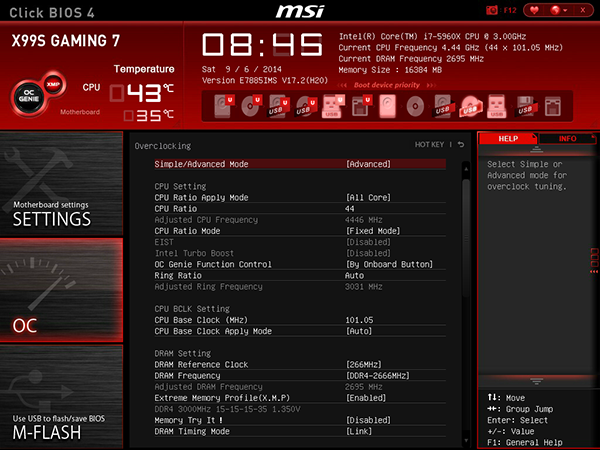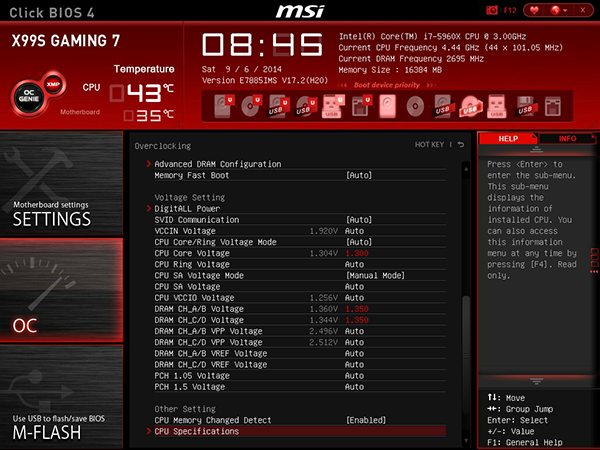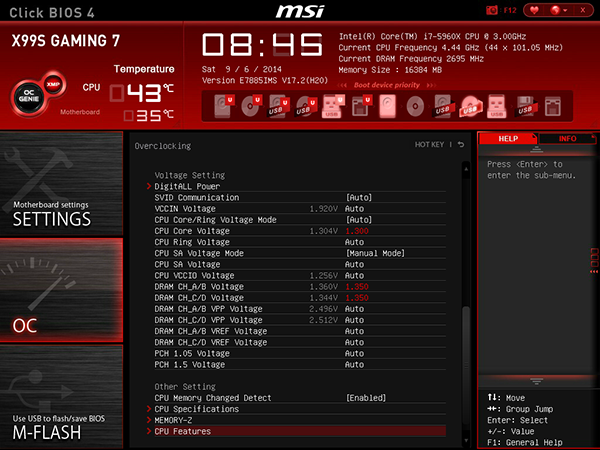Three-Way X99 LGA 2011-v3 ATX Motherboard Shootout
Buyers of Intel's X99 platform, which supports Intel's Haswell-E and new DDR4 memory, were probably prepared to pay a premium for mid-market boards. Are any of these $240 to $300 models worthy of Intel’s latest CPUs?
MSI X99S Gaming 7 Firmware
Our CPU reached its approximate 4444 MHz 1.30 V limit at an actual 4446 MHz on the X99X Gaming 7, thanks to a slight rounding difference on the 101 MHz base clock setting.
The X99S Gaming 7’s 1.30 V CPU core setting was detected as such by CPU-Z, and the full-load temperatures produced were very close to that of the other two contenders in today’s comparison.
The X99S Gaming 7 tried to set our DDR4-3000 RAM using the CPU’s 1.25x strap to run 125 MHz with a 24x multiplier. Failing that, we reduced our BCLK to 124 MHz at DDR4-2976.
Everything about the DRAM is adjustable per-channel, including the voltage level. Fortunately, selecting “Link” as the main menu’s “DRAM Timing Mode” allows us to set identical timings for both channels, without manually entering those values twice.
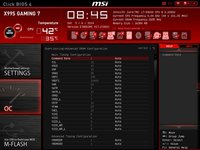
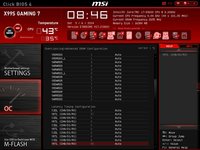

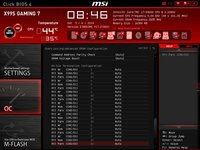
Like some of its competitors, MSI allows custom fan slopes to be configured in firmware. Unlike other competitively-matched features, such as overclocking profile registers, MSI does its fan control a little more stylishly.
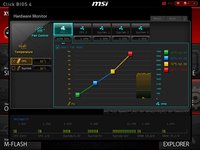
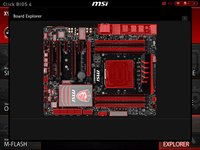
MSI even adds “Board Explorer” to show the detected location of each connected device. A mouse-enabled interface, hovering over the highlighted areas reveals more information about devices attached there. This is great for builders who can’t figure out whether or not a component is being detected.
Get Tom's Hardware's best news and in-depth reviews, straight to your inbox.
Current page: MSI X99S Gaming 7 Firmware
Prev Page MSI X99S Gaming 7 Software Next Page How We Tested X99 Motherboards